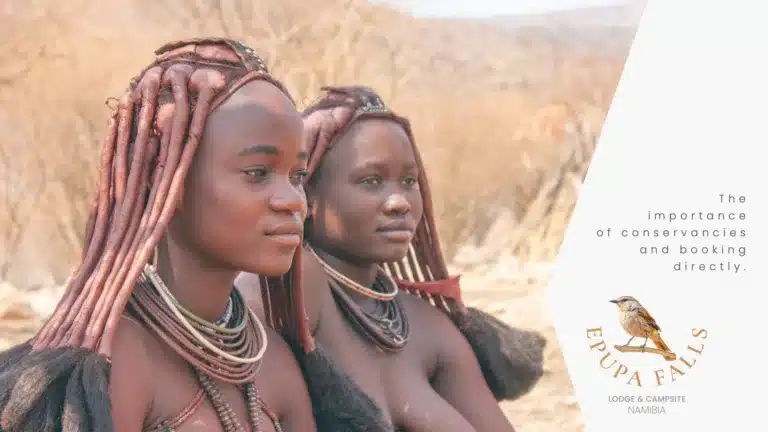
The Importance of Conservancies and Booking Directly
An informative post re the importance of conservancies and why booking locally is the way forward as opposed to supporting online booking agents like BookingCom.
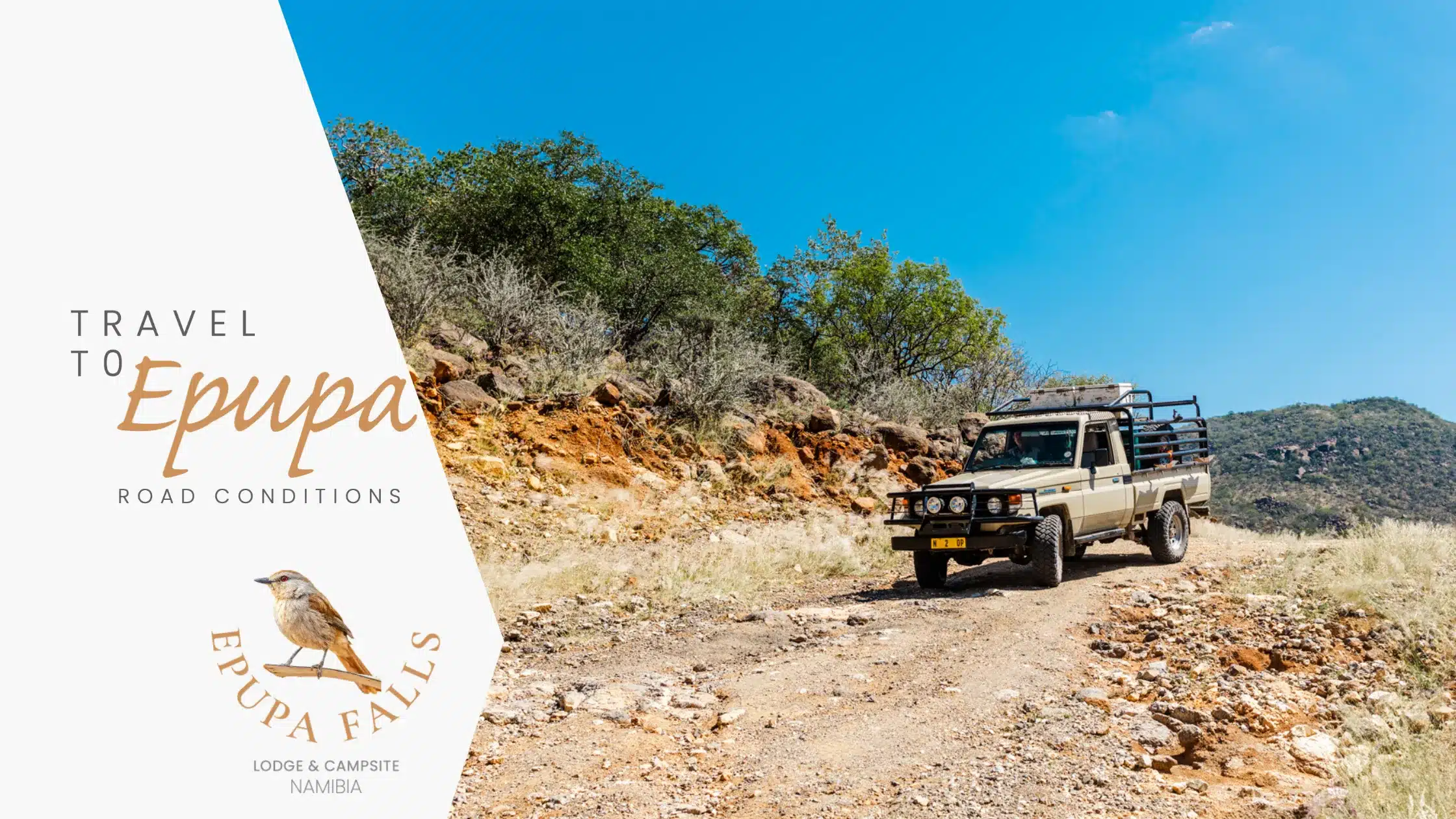
6 May 2023
Let’s start with Namibia’s winter season as our roads are mainly unchanged during the cooler months.
Winter, according to Namibians is from May until August. But the reality is that it is about 1 week somewhere in July. Though the south of Namibia can get very cold during the night, the days almost always heat up to modest temperatures that do not require serious jackets. Northern Namibia, and especially the Epupa Valley, cools down during the winter with lovely nights and stunning days – perfect for activities in the area. As Namibia has dry winters, rain is never on the horizon although the deep south of Namibia can have an expected shower or two during a cold front.
Maximum temperatures during the winter at Epupa Falls Lodge can still reach the higher 30s while the lows are around 15’C.
Considering the winter temperatures and the unlikeliness of rain in our neck of the woods, the roads will remain unchanged as far as river crossings and flooding are concerned. From the middle of June to the end of October the traffic pics up considerably in our area. Due to travellers travelling too fast, not 4×4 and with the wrong tyre pressures, our roads get corrugated quite quickly and rather horrific. This will slow down your journey time. Even though the roads are graded about every two weeks, corrugation is still a problem.
A few quick tips: Lower your tyre pressure when driving gravel roads. Drive in 4×4 and DRIVE SLOWLY!
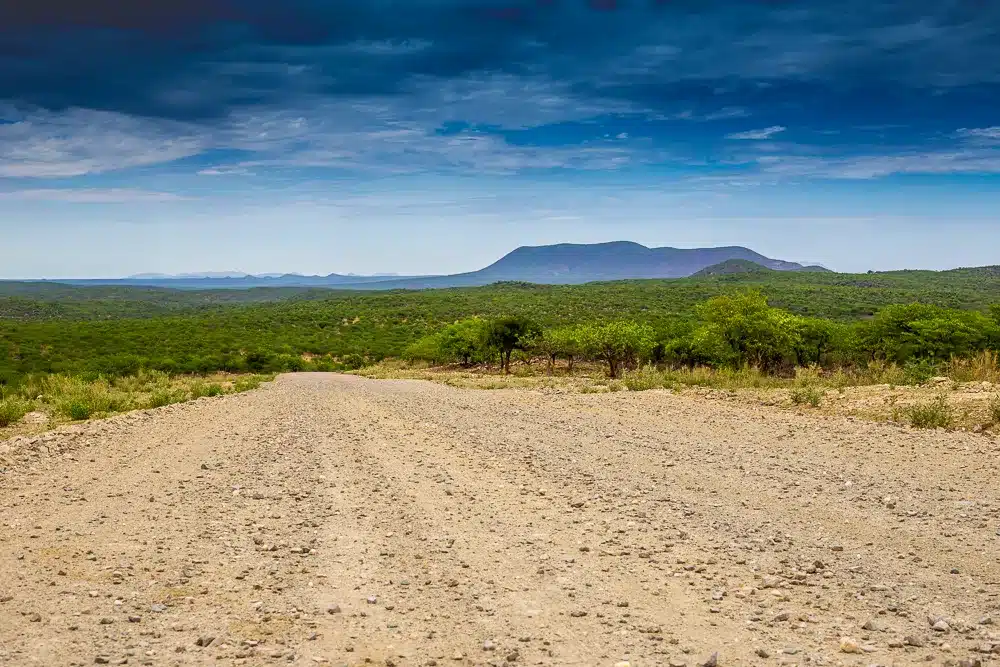
Now this is where the fun begins. Summer brings rain and rain brings Namibians great happiness. But it also changes our gravel roads.
Here are few factoids to consider when travelling in Namibia during the wet season.
When there is flooding in our neck of the woods, we’ll keep travellers up to date on our various social media platforms. So make sure you are following us. But what if you need to travel and you cannot drive the D3700?
Here are a few options.
You can either drive from Ruacana to Swartbooisdrift and from there head inland on the D3701 to Epembe. Take the C43 from Epembe and follow the directions in the previous post. Or you can head from Ruacana all the way back to Opuwo and make your way up to Epupa following the C43 all the way to Epupa.
Although the C43 also has a lot of river crossings, the only one that is of concern here is the one at Okongwati. If this river is in flood, nobody crosses for several hours.
Again, we’d like to share a few tips when it comes to muddy roads, flash floods and river crossings.
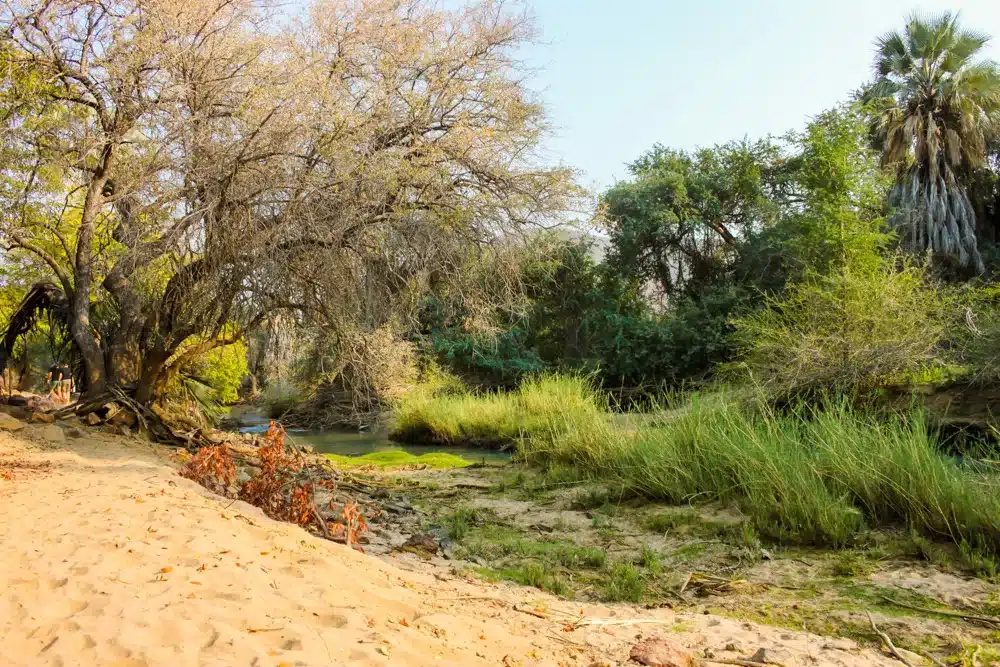
When the Kunene river is in flood, it is big news. This usually leads to a few flooded houses, lost crops and the Ruacana Falls gloriously white as the waters rush downstream toward Epupa.
Though we will clarify in a following post when is the best time to see the Epupa Falls, we’ll quickly note that flooding happens mostly between March and May when the big waters from the Angolan highlands reach Namibia. When the Kunene is in flood, parts of the D3700 along the Kunene is not passable for days on end.
Please make sure all roads are dry and driveable before you continue your journey on the D3700.
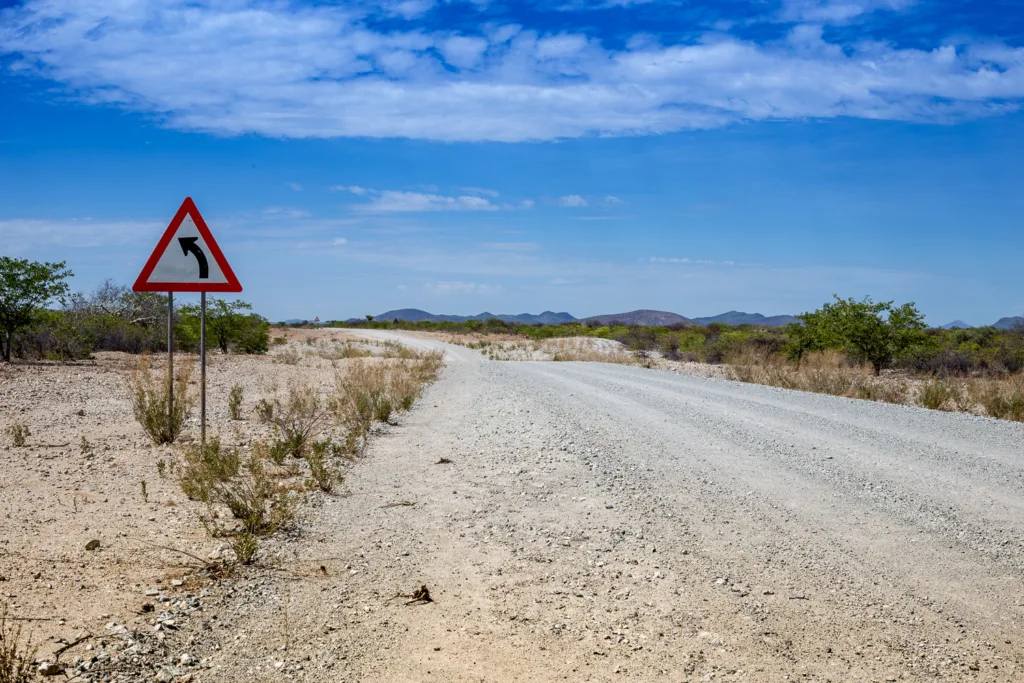
Next week we’ll answer a few more questions as we discuss the best time to visit Epupa and if you really need a 4×4 to travel through Namibia and specifically to Epupa.

An informative post re the importance of conservancies and why booking locally is the way forward as opposed to supporting online booking agents like BookingCom.
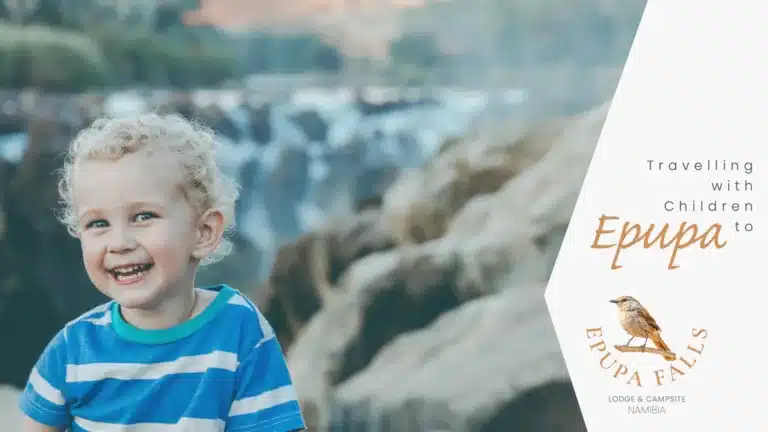
Travelling to Epupa with Children can be a rewarding and memorable experience for the whole family. Here are some tips and advice by Epupa Falls Lodge.
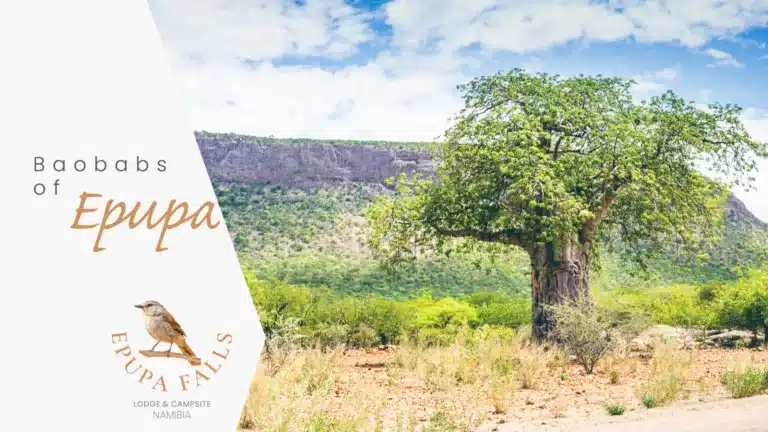
One of the many reasons to visit Epupa is the incredible variety of trees and plants. Today, we’ll only look at one – the majestic baobabs of Epupa.